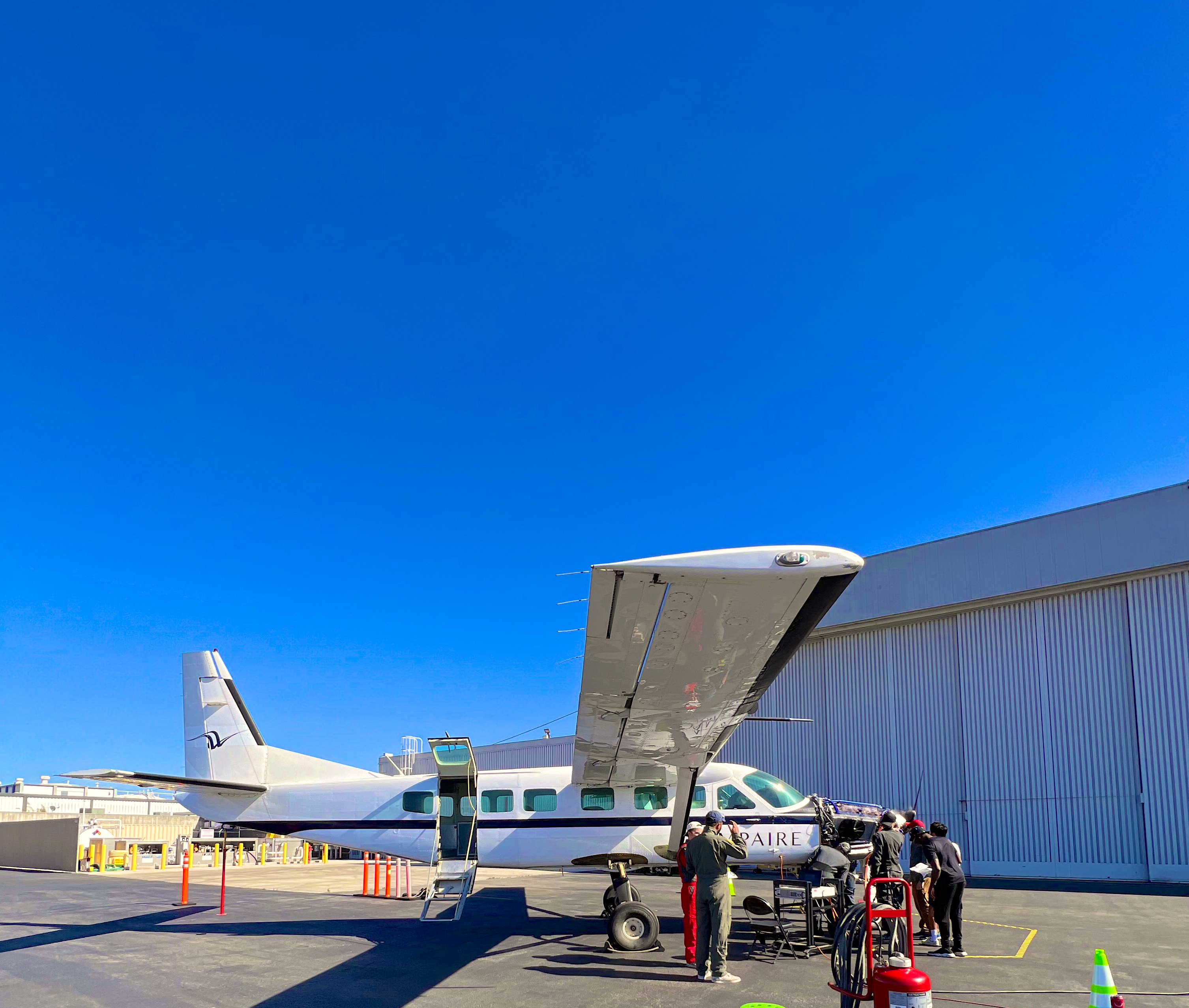Click Here to View This Page on Production Frontend
Click Here to Export Node Content
Click Here to View Printer-Friendly Version (Raw Backend)
Note: front-end display has links to styled print versions.
Content Node ID: 419553
On the financial and commercial fronts, hybrid-electric aviation pioneer Ampaire is shifting gears following its recent parting of ways with prospective investor/launch customer Surf Air Mobility, but the company says it is full steam ahead with plans to bring a converted Textron Cessna Grand Caravan utility aircraft to market in 2024. The California-based start-up is preparing to launch a Series B funding round to boost its plans to achieve what co-founder and CEO Kevin Noertker says is the fastest route to getting electric aircraft flying revenue-earning trips.
Neither party will say why a February 2021 agreement for flight marketplace Surf Air to acquire Ampaire and order significant numbers of its Eco Caravan aircraft fell apart last month. “There are many more customers out there beyond Surf Air Mobility,” Noertker told FutureFlight, making a point of mentioning that the decision to split had been initiated by Ampaire. “We’ve decided to move forward as a standalone company, and have immediately raised funds from existing investors, who are confident that what we’re doing at Ampaire is one of the most meaningful ways to cut carbon emissions from aviation.”
Also during April, at its Hawthorne Airport headquarters near Los Angeles, Ampaire began ground testing the propulsion system it has developed to replace the Grand Caravan’s Pratt & Whitney turboprop engine. In 2021, the company conducted detailed engineering and market studies to define the necessary specifications and performance of the hybrid powertrain, and how it will achieve approval under an FAA supplemental type certificate (STC). Ampaire has fit the first test example in the nose of a Caravan and Noertker said his team will continue to refine it in preparation for flight tests to start in the second half of this year.
“The STC is easier than a type certificate as developing a clean-sheet aircraft could take a decade, if it even succeeds, so this is more capital efficient as designing new airplanes in ignorance of what certification requirements will be is very risky,” Noertker said. He was speaking with FutureFlight almost two weeks before reports surfaced of FAA plans to change the regulatory framework for new eVTOL aircraft.
According to Noertker, the fastest previous project to install new engines on the ubiquitous Caravan is about one year. Ampaire believes its efforts to introduce new propulsion technology will take 36 months in total, and, having started work in 2021, this gives it a timeline for regulatory approval in mid-2024.
FAA officials visited Ampaire in early May to discuss plans for what will be one of the first hybrid-electric aircraft to be certified. In what he described as “deep conversations” with the regulator, Noertker said he has had the opportunity to “educate” officials about the safety case for the conversions. “I believe both regulators and end-users will find value in the [safety] redundancy in our hybrid system [based on both batteries and a turbo generator to produce power for the electric motors],” he explained. “If one part fails there is a very graceful degradation [of power] and the airplane is still controllable as our electrical systems are very robust, and also cost less to maintain.”
Ampaire says that, compared with the current model, the Eco Caravan will deliver fuel savings of up to 70 percent for short flights and over 50 percent on longer routes while carrying nine passengers or cargo. If burning sustainable aviation fuel, it would cut carbon emissions by up to 90 percent. Also, the Eco Carvan would be able to operate from airports that don’t yet have electric recharging infrastructure.
Textron, which has just formed its own electric aviation division with the acquisition of European light aircraft maker Pipistrel, is well aware of Ampaire’s plans for what has been one of its best-selling models. Noertker said he couldn’t comment on prospects for a formal collaboration with the major U.S. group but did acknowledge that “they are serious about electrification.”
As it steps up its commercial and business development activities, Ampaire will focus more intently on exploring sales opportunities among existing Part 135 commercial operators. It is also working on plans to convert other aircraft, such as the DHC-6 Twin Otter and the Cessna 337 SkyMaster. The latter has served as its Electric EEL flying testbed for more than a year, with test flights conducted over the past couple of years with airline partners including Hawaii-based Mokulele and Scotland’s Logan Air.
The company has longer-term ambitions to scale up its propulsion system to power even larger regional airliners, such as the 50-seat ATR 42. To date, it has logged more than 12,000 nautical miles in test flights, which is markedly more than rival hybrid-electric propulsion developers like VoltAero, and is also well ahead of companies developing hydrogen-electric solutions.
“We want to be the world’s most trusted developer of hybrid-electric aircraft, and we’ve found that moving quickly has been the most efficient way to get this done, as we’ve got the Caravan up and running in about three and a half months,” Noertker concluded, when asked to compare Ampaire’s path to market to those of start-ups racing to bring new eVTOL models to market. “We feel the same pressures, but it’s about being thoughtful along the way and never sacrificing safety.”
